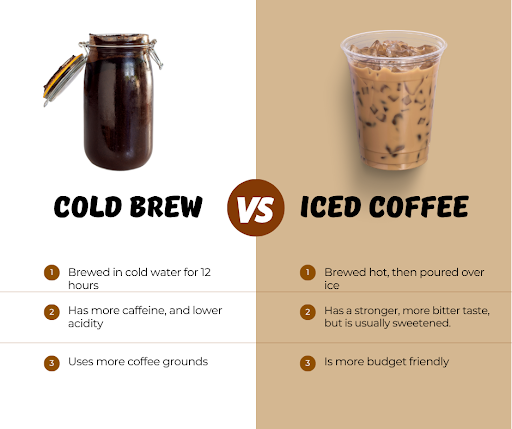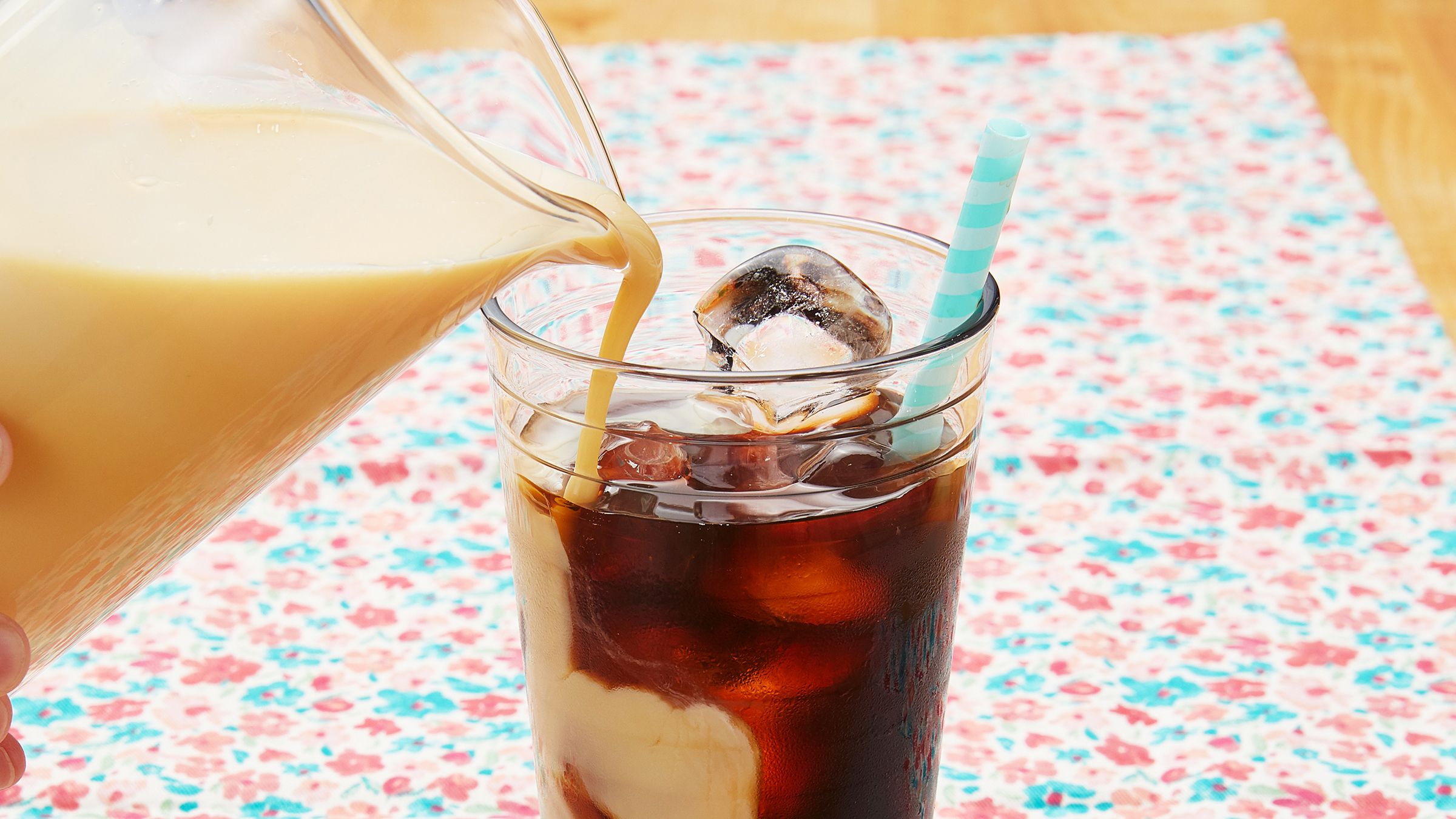
Cold brew coffee offers a deliciously smooth, rich flavor that has won the hearts of coffee enthusiasts worldwide. Its low acidity and versatility make it an appealing alternative to traditional coffee. This extended guide will walk you through advanced tips, variations, and practical advice for mastering cold brew coffee, along with a personal perspective from someone who has incorporated this delightful brew into their daily routine.
Why Cold Brew Coffee Stands Out
Cold brew isn’t just iced coffee—it’s a completely different brewing method with its own unique qualities.
- Lower Acidity: Cold brewing extracts fewer acidic compounds from coffee beans, resulting in a smoother, gentler taste.
- Naturally Sweet Flavor: Without heat, the natural sweetness of the coffee beans shines through, offering a mellow, chocolatey profile.
- Versatility: Cold brew concentrate can be customized to create a variety of beverages, from iced lattes to coffee cocktails.
- Convenience: Make a large batch and enjoy fresh coffee for up to two weeks.
The Importance of Choosing the Right Coffee Beans
While cold brew can be made with almost any coffee, selecting the right beans significantly enhances the flavor.
1. Roast Level
Medium to dark roasts are best for cold brew. They bring out the rich, chocolate, and nutty flavors that complement the cold brewing process.
2. Single-Origin vs. Blend
Single-origin beans offer distinct flavor notes, while blends provide balanced profiles. Experiment to find what suits your taste.
3. Freshness
Freshly roasted beans yield the best flavor. Look for coffee beans roasted within the past two weeks for optimal results.
Alternative Brewing Methods for Cold Brew
While the standard mason jar and strainer method works perfectly, you might want to explore these alternatives for a more refined brewing experience:
1. Cold Brew Coffee Maker
Specialized cold brew makers streamline the process, offering built-in filters and spouts for easy pouring.
- Recommended Use: Ideal for frequent cold brew drinkers looking for convenience.
- Example: The OXO Brew Compact Cold Brew Coffee Maker is simple to use and produces a smooth concentrate with minimal effort.
2. French Press
The French press isn’t just for hot coffee; it doubles as a cold brew maker. After steeping, press the plunger to separate the grounds from the concentrate.
- Recommended Use: Great for small batches with minimal cleanup.
3. Toddy System
The Toddy Cold Brew System is designed specifically for cold brew enthusiasts. It uses a unique felt filter to create a rich, smooth concentrate.
- Recommended Use: Best for making large batches with professional results.
Personal Experience: Embracing Cold Brew Coffee at Home
My journey into cold brew coffee began out of curiosity—and a love for smooth, iced coffee during hot summers. I started with the simplest method: combining coarse coffee grounds and water in a mason jar and leaving it to steep overnight. The result was unexpectedly good. It was less bitter than my usual iced coffee and had a velvety texture that I immediately loved.
As I became more serious about cold brew, I invested in a dedicated cold brew maker. The OXO Brew Compact model was my choice, and it made a noticeable difference. The built-in filter eliminated the need for cheesecloth or strainers, and the spout allowed me to pour without spills. I appreciated how easy it was to clean, especially since I make cold brew several times a week.
That said, my biggest takeaway is the importance of experimenting with ratios and beans. For instance, a medium-roast Colombian bean gave me a fruity, refreshing flavor, while a dark-roast Sumatra added depth and richness. Having control over the flavor and strength of my coffee has been a revelation.
However, cold brew isn’t without its quirks. I’ve learned to be patient with steeping times—steeping for too long can lead to a muddy taste. I’ve also discovered that using filtered water makes a surprising difference in the final flavor.
Now, cold brew is a staple in my kitchen. Whether I’m enjoying it black on a busy morning or crafting an oat milk latte with vanilla syrup, it’s become a ritual I look forward to.
How to Elevate Your Cold Brew Coffee
Once you’ve mastered the basics, try these advanced techniques to enhance your cold brew experience:
1. Infuse Flavors
Add spices, citrus peels, or herbs during the steeping process for a unique twist. Cinnamon sticks, orange peels, and mint leaves are popular choices.
2. Experiment with Ratios
While the standard 1:4 coffee-to-water ratio works well, adjusting it can yield interesting results. A 1:3 ratio creates a stronger concentrate, perfect for adding to milk or cream.
3. Play with Milk Alternatives
Cold brew pairs beautifully with non-dairy milks like almond, oat, or coconut. Each adds its own distinct flavor profile.
4. Use Coffee Ice Cubes
Freeze leftover cold brew into ice cubes to prevent dilution as your coffee melts.
5. Sweeten Creatively
Skip the sugar and use natural sweeteners like honey, agave syrup, or flavored syrups to complement your cold brew.
Troubleshooting Common Cold Brew Issues
Cold brew is forgiving, but occasional hiccups can occur. Here’s how to address them:
- Weak Flavor: Use a higher coffee-to-water ratio or steep for a longer time.
- Bitterness: Check your grind size—it might be too fine. Also, ensure you’re not steeping for too long.
- Sediment in Coffee: Use a double-straining method or invest in a finer filter.
- Cloudy Concentrate: Ensure your brewing container is clean and rinse your filter thoroughly before use.
Cold Brew Variations for Every Season
Cold brew’s versatility means you can enjoy it year-round. Here are seasonal variations to inspire your next batch:
Conclusion
Cold brew coffee is more than a beverage; it’s a versatile, customizable experience that fits seamlessly into any lifestyle. With its smooth flavor, lower acidity, and endless serving options, cold brew offers something for everyone. Whether you’re a seasoned coffee enthusiast or a curious beginner, this guide provides the tools and insights to help you master the art of cold brew coffee. Explore, experiment, and enjoy the process—your perfect cup awaits.

1. Summer: Classic Iced Cold Brew
Dilute cold brew concentrate with cold water, pour over ice, and add a splash of milk or cream.
2. Fall: Spiced Cold Brew Latte
Mix cold brew with steamed milk and a dash of pumpkin spice or cinnamon for a cozy fall treat.
3. Winter: Cold Brew Hot Chocolate
Combine cold brew concentrate with hot chocolate for a rich, caffeinated winter drink.
4. Spring: Floral Cold Brew
Add edible flowers like lavender or rose petals during the steeping process for a light, fragrant brew.
Frequently Asked Questions (FAQ)
Q: Can I make cold brew with pre-ground coffee?
A: While possible, pre-ground coffee may result in over-extraction due to its finer grind. For best results, use coarsely ground coffee.
Q: What’s the difference between iced coffee and cold brew?
A: Iced coffee is brewed hot and served over ice, while cold brew is made by steeping coffee grounds in cold water, resulting in a smoother flavor.
Q: How long should I steep my cold brew?
A: Steep for 12–24 hours. Longer times create a stronger brew but can also introduce bitterness.
Q: Can I reuse coffee grounds for a second batch?
A: Reusing grounds is not recommended, as they will lack flavor and produce a weak brew.
Q: Do I need a special grinder for cold brew?
A: While any grinder with a coarse setting works, a burr grinder is preferred for consistency.
Q: How do I make cold brew less strong?
A: Dilute the concentrate with more water or milk before serving.
Q: Can I heat cold brew concentrate?
A: Yes, you can dilute cold brew concentrate with hot water for a smooth, hot coffee.
Q: What’s the best way to store cold brew?
A: Store it in an airtight container in the refrigerator for up to two weeks.
Q: Can I use flavored coffee beans for cold brew?
A: Yes, flavored beans can add an extra dimension to your cold brew, but ensure they’re high-quality for the best results.
Q: Why is my cold brew cloudy?
A: Cloudiness often results from fine sediment. Use a finer filter or double-strain your brew.